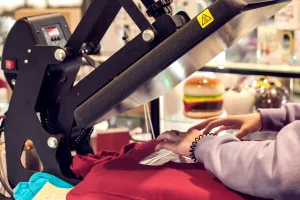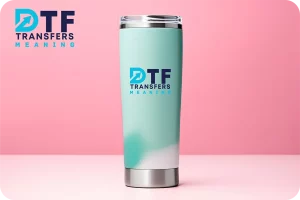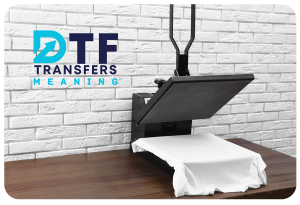Introduction to DTF Transfers
Table of contents
- Introduction to DTF Transfers
- Preparing for DTF Transfer Application
- Applying DTF Transfers to Cotton
- DTF Transfers on Polyester Fabrics
- Utilizing DTF Transfers on Blended Fabrics
- DTF Transfers on Non-Fabric Materials
- Troubleshooting Common DTF Transfer Issues
- Post-Application Care for DTF Transfers
- Creative Ideas for DTF Transfer Projects
- Conclusion and Final Thoughts
- Recap of Key Techniques
A. Explaining DTF Technology
Direct to Film (DTF) transfers represent a groundbreaking technique in the world of printing and design. Utilizing a unique process that involves printing a design onto a special film, DTF transfers allow for high-quality, detailed graphics to be transferred onto a plethora of materials. This section will demystify the DTF process and elucidate its mechanics.
B. Benefits of Using DTF Transfers
The appeal of DTF transfers lies in their versatility and quality. Capable of producing vivid colors and crisp details, these transfers offer a durable and flexible solution for custom designs. This segment will explore the myriad advantages of using DTF technology, from its durability to its adaptability.
Preparing for DTF Transfer Application
A. Essential Tools and Materials
Before embarking on a DTF transfer project, assembling the right tools and materials is crucial. This includes the DTF printer, transfer films, heat press, and appropriate substrates. This section will provide a comprehensive checklist to ensure all necessary equipment is at hand.
B. Pre-Application Checklist
Preparation is key to a successful DTF transfer application. This involves ensuring the substrate is clean, dry, and free of any debris. This segment will guide you through the preparatory steps, setting the stage for a flawless transfer process.
Applying DTF Transfers to Cotton
A. Preparation of Cotton Material
Cotton, with its natural fibers, requires specific attention before applying DTF transfers. Pre-treating the fabric to ensure optimal ink adherence is a crucial step. This section will detail the preparation process for cotton materials, ensuring they are primed for the transfer.
B. Step-by-Step Application Process
The application of DTF transfers to cotton involves a series of methodical steps. From aligning the transfer film to applying heat and pressure with a heat press, each phase is critical. This part of the article will walk you through the process, ensuring precision and perfection in the transfer.
DTF Transfers on Polyester Fabrics
A. Characteristics of Polyester for DTF
Polyester, with its synthetic makeup, presents unique challenges and opportunities for DTF transfers. Understanding its heat sensitivity and ink absorption characteristics is essential. This segment will delve into the nuances of working with polyester, preparing you for a successful transfer.
B. Application Technique on Polyester
Applying DTF transfers to polyester demands a careful balance of heat and pressure. Too much heat can damage the fabric, while insufficient heat may lead to poor transfer quality. This section will provide detailed guidance on the optimal technique for applying DTF transfers to polyester fabrics.
Utilizing DTF Transfers on Blended Fabrics
A. Understanding Fabric Blends
Blended fabrics, combining the qualities of different fibers, require a nuanced approach for DTF transfers. Recognizing the proportions of natural and synthetic fibers in the blend is key to determining the right application method. This part will help you understand and navigate the complexities of blended fabrics.
B. Adjustments in Application Method
The application process for blended fabrics may require adjustments in temperature, pressure, and timing. This segment will offer tailored advice for applying DTF transfers to various fabric blends, ensuring a successful and vibrant transfer.
DTF Transfers on Non-Fabric Materials
A. Possibilities with Hard Surfaces
DTF transfers are not limited to fabrics; they can also be applied to an array of hard surfaces, including wood, metal, and certain plastics. This section will expand on the potential of DTF technology beyond textiles, opening doors to innovative applications.
B. Tips for Successful Application
Applying DTF transfers to non-fabric materials involves additional considerations, such as surface treatment and heat resistance. This part of the article will provide practical tips and techniques for achieving optimal results on various hard surfaces.
Troubleshooting Common DTF Transfer Issues
A. Identifying and Resolving Problems
Even with careful preparation, issues can arise during the DTF transfer process. Common problems include peeling, color bleeding, and uneven transfer. This section will help you identify and troubleshoot these issues, ensuring a high-quality end result.
B. Preventative Measures
Prevention is better than cure, especially in the realm of DTF transfers. Implementing the right practices can mitigate many common issues. This segment will offer preventative tips, from correct storage of materials to proper machine maintenance.
Post-Application Care for DTF Transfers
A. Maintenance Tips for Longevity
Proper care post-application is essential to prolong the life of DTF transfers. This includes guidelines on washing, drying, and handling the transferred materials. This section will provide essential maintenance tips to preserve the vibrancy and integrity of your DTF transfers.
B. Cleaning and Storage Recommendations
Correct cleaning and storage play a pivotal role in the longevity of DTF transfers. This part will offer advice on the best practices for cleaning and storing materials with DTF transfers, ensuring they remain in pristine condition.
Creative Ideas for DTF Transfer Projects
A. Innovative Applications
The versatility of DTF transfers opens up a world of creative possibilities. From custom apparel to unique home decor, the potential applications are vast. This section will spark your imagination with innovative ideas for DTF transfer projects.
B. Inspiration for Unique Designs
Creativity knows no bounds with DTF transfers. This segment will provide inspiration for unique and eye-catching designs, encouraging you to push the boundaries of traditional applications and explore new artistic horizons.
Conclusion and Final Thoughts
Recap of Key Techniques
In conclusion, mastering the art of applying DTF transfers to various materials requires understanding, precision, and creativity.
This final section will recap the key techniques and considerations covered in the article, reinforcing the essential knowledge for successful DTF transfer applications.
Encouraging Creative Exploration
As we wrap up, remember that the world of DTF transfers is constantly evolving, with new techniques and applications emerging regularly. This closing remark will encourage readers to continually explore and experiment with DTF transfers, unlocking endless possibilities in the realm of design and customization.





